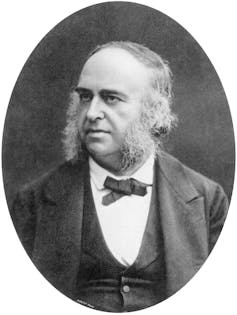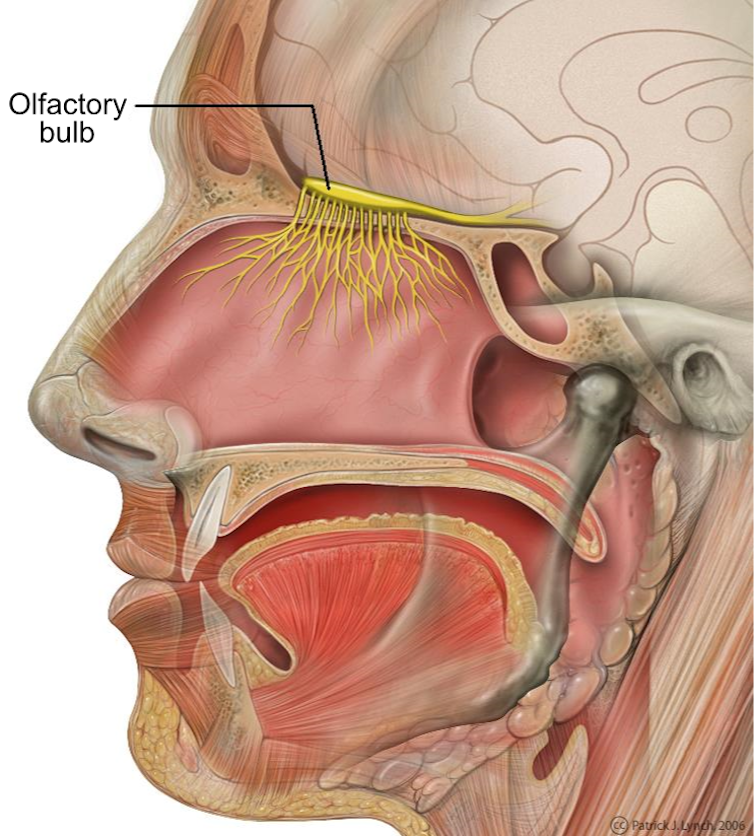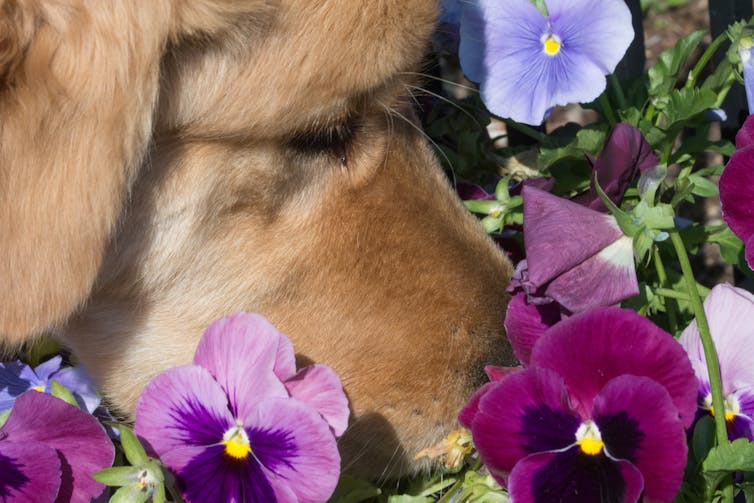Conventional wisdom has it that humans have a poorer sense of smell than most other animals. Sure, we can smell – most of us appreciate the aroma of our morning coffee or a delightful fragrance, and we’re able to detect burning toast or a gas leak. But we have nonetheless long been thought to be relative weaklings in the animal kingdom’s league of olfactory excellence, which puts dogs and rodents near the top.
But now a review of the latest evidence, published in the journal Science, challenges this idea. It suggests the very notion that humans lag behind stems from promulgation of a 19th-century myth.

According to the neuroscientist John McGann, the myth can be traced to the work of French neuroanatomist Paul Broca. Writing in 1879, Broca divided mammals into those for whom smell is critical in day-to-day behaviour (such as dogs and rodents) and those for whom it is not (mainly primates including humans).
He based this distinction on two main pieces of evidence: the comparatively small size of the brain’s “olfactory bulbs” (the neural structure involved in smell) relative to total brain volume, and the observation that odour has less influence on human behaviour compared with other species. He concluded that we had effectively sacrificed our olfactory apparatus as a result of and in exchange for expansion of the higher reasoning centres in the brain’s frontal lobes.
This idea that the human sense of smell is no longer needed in an evolutionary sense was subsequently embraced by other anatomists. The psychologist Sigmund Freud extended this, interpreting an interest in body smells to be a throwback of our ancestral past, even symptomatic of psychiatric disorder in certain cases.
The myth continues to influence researchers. One example is how genetic analyses of olfactory gene function have been interpreted. Of around 1,000 known genes for receptors (special cells that are activated by odours), about 40% are non-functional “pseudogenes” – meaning they do not actually code for odour receptors in the nose. This compares to only about 18% in mice. It has been argued that this indicates that natural selection in humans may have favoured senses such as vision at the expense of smell.
Surprising findings
Several lines of evidence are emerging to challenge, even overturn, this viewpoint. For example, new studies suggest that pseudogenes may in fact have some regulatory function on other genes involved in smell reception – and that the proportion of functional to non-functional genes across species is neither a reliable predictor of olfactory prowess nor of differences in visual abilities among primates.
Even more interesting is that recent evidence has undermined the two foundations of Broca’s original assertion. On his first point, Broca was right to some extent. Humans have relatively small olfactory bulbs when calculated as a proportion of overall brain volume. In these terms, mice have olfactory bulbs 200 times the size of humans, while those of dogs are 40 times larger.

But a new technique that enables us to quantify the number of olfactory brain cells (neurons) in the respective bulbs of different species has yielded an extraordinary and unexpected result. Regardless of bulb size, the absolute number of neurons is remarkably similar across a range of species that otherwise vary widely in body size and apparent reliance on smell. It would appear that whether one is human, mouse, monkey or even star-nosed mole, there is a magic number of neurons – about 10m – that is necessary and sufficient to achieve olfactory function. In other words, it is the abundance of these neurons, not the size of the anatomical structures that houses them, that is important.
When it comes to how odour influences behaviour, Broca would have been intrigued to see the a wealth of new evidence showing the extent to which humans are indeed driven by smell. We now know that exposure to certain odours can induce involuntary physiological and hormonal responses – as well as psychological outcomes involving memory and emotion. Indeed, odours undoubtedly shape our actions, from our hygienic behaviour to our shopping habits. For example, one experiment showed that when subliminally exposed to citrus-scented all-purpose cleaner, people rated cleaning as more important than they otherwise would and were more fastidious about tidying up.
Freud might have been alarmed by new knowledge showing how significant body odour is for humans – whether it be how we unconsciously smell our hands after a handshake, how it shapes our partner choice, or how we use fragrances to augment rather than mask our own smell.
Training the nose
All this suggests we have both the capability and opportunity to put our noses to good use. So how do we actually compare with other species? Such experiments are challenging to implement, but the available evidence suggests that we can outperform even rats, monkeys and dogs in perceiving trace quantities of certain odour molecules that, presumably, are more salient in our experience.

So at least if it’s chocolate, humans can follow a scent trail through a field just as dogs can track pheasants.
In such experiments it is important to note that people get significantly faster and more accurate at this tracking task after just a few trials. And, at least in my view, it is this training effect that explains how the myth about human smell has persisted for as long as it has and why it tends to ring true. The research suggests that our much-maligned nose – and all the associated neural apparatus involved in smell perception – is not really the issue. It’s just that, like a muscle, we need to use it. When we do, we may be the weakling no longer.

